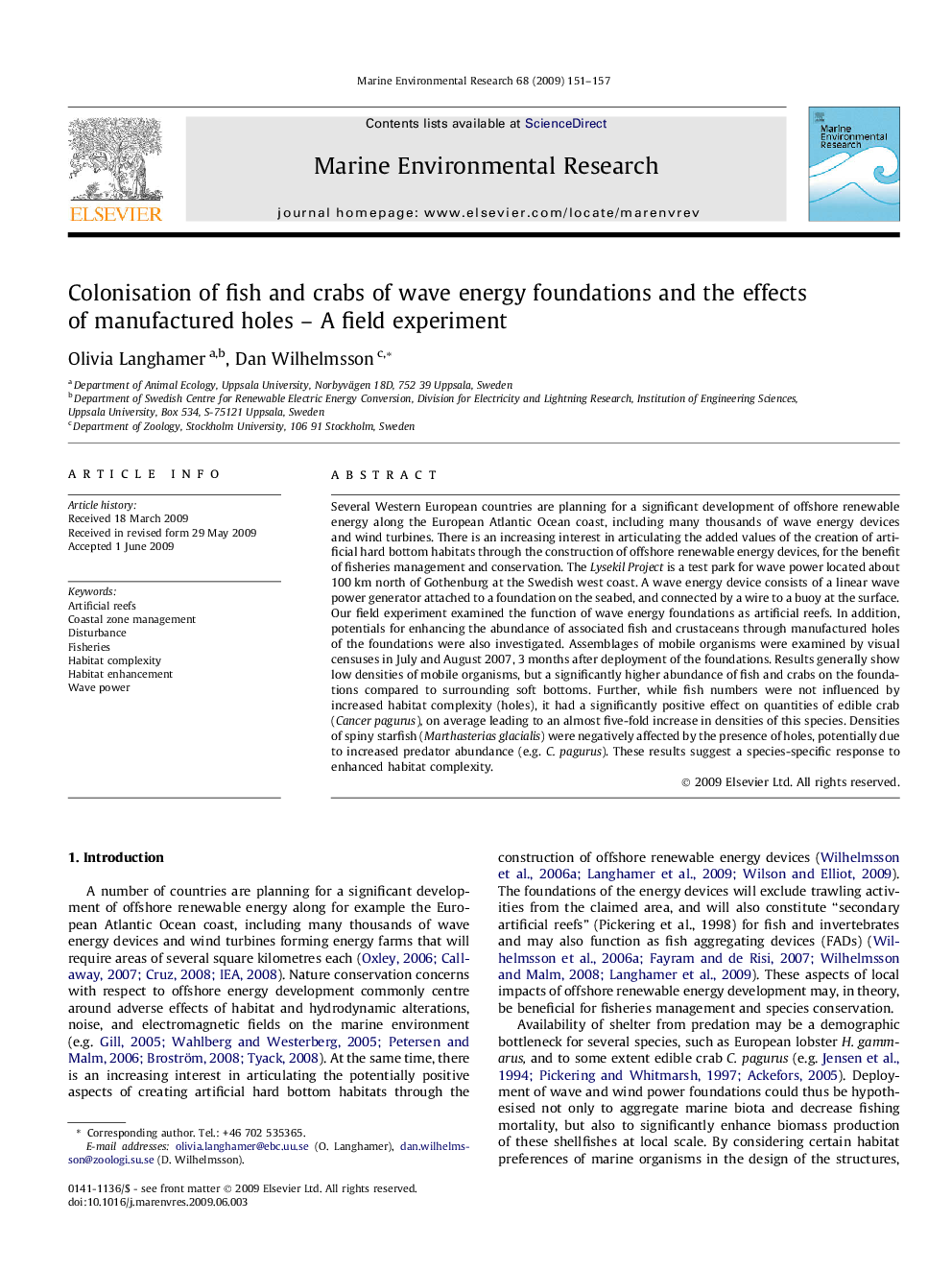| Article ID | Journal | Published Year | Pages | File Type |
|---|---|---|---|---|
| 4551306 | Marine Environmental Research | 2009 | 7 Pages |
Several Western European countries are planning for a significant development of offshore renewable energy along the European Atlantic Ocean coast, including many thousands of wave energy devices and wind turbines. There is an increasing interest in articulating the added values of the creation of artificial hard bottom habitats through the construction of offshore renewable energy devices, for the benefit of fisheries management and conservation. The Lysekil Project is a test park for wave power located about 100 km north of Gothenburg at the Swedish west coast. A wave energy device consists of a linear wave power generator attached to a foundation on the seabed, and connected by a wire to a buoy at the surface. Our field experiment examined the function of wave energy foundations as artificial reefs. In addition, potentials for enhancing the abundance of associated fish and crustaceans through manufactured holes of the foundations were also investigated. Assemblages of mobile organisms were examined by visual censuses in July and August 2007, 3 months after deployment of the foundations. Results generally show low densities of mobile organisms, but a significantly higher abundance of fish and crabs on the foundations compared to surrounding soft bottoms. Further, while fish numbers were not influenced by increased habitat complexity (holes), it had a significantly positive effect on quantities of edible crab (Cancer pagurus), on average leading to an almost five-fold increase in densities of this species. Densities of spiny starfish (Marthasterias glacialis) were negatively affected by the presence of holes, potentially due to increased predator abundance (e.g. C. pagurus). These results suggest a species-specific response to enhanced habitat complexity.
